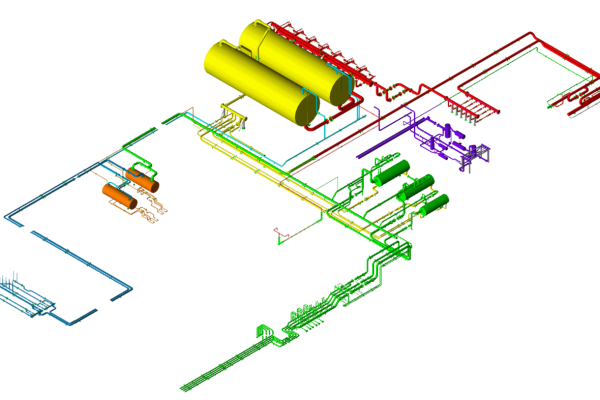Recently in the fall of 2017 a renewed edition of the ISO14692, the governing standard for fiber reinforced plastic piping, was officially released.
The objective of ISO 14692 is to provide the oil and gas industry, as well as the supporting engineering and manufacturing industry, with mutually agreed specifications and recommended practices for the purchase, qualification, manufacturing, design, handling, storage, installation, commissioning and operation of GRP piping systems.
The previous official release was in the year 2002. Since then the experience with FRP-piping has increased significantly, much of this experience is now included in this latest revision of the standard.
Issue 2017 of the standard now more clearly defines a step-by-step set of guidelines. The standard offers a questionnaire to be filled-out by the end-user in the bidding stage. This questionnaire aids the end user to provide the right information to the manufacturer and designer. Information such as pressure, and temperature requirements as well as other information crucial to select the appropriate FRP piping component composition as pressure class. By providing clearer requirements for the provion of information, there is a much higher chance that all selection and design of the FRP system occurs conform the standard requirements.
Contrary to the last official release of the standard in the year 2002, the new edition addresses buried GRP piping. A pipe buried in soil with a certain cover depth will experience a vertical deflection due to the weight of the soil and additional soil loads. Previously, to assess such deflection, the engineer would need to divert to the rules and guidelines of the AWWA M45 standard. Since this assessment is already standard practice by many engineers in the design of buried piping, the AWWA M45 vertical deflection assessment was brought into the ISO14692, thus making this a mandatory component of the assessment of buried piping when following the ISO 14692.
One aspect of the standard that did not match industry common practices has been the application of the stress intensification factors (SIF’s) and flexibility factors. Many of the original research on these values was done in the context of stress analysis of components made of anisotropic materials. The design of anisotropic components generally differs considerably from that of isotropic materials. The 2002 edition of the standard provided SIF’s for fiberglass fittings which were based on the SIF’s in the BS7159. A study performed by SINTEF has shown that the BS7159 underpredicts the stiffness of GRP fittings substantially, from which it can be concluded that the SIF’s from the BS7159 are not applicable to GRP fittings. Therefore one common practice in the industry was to use a SIF of 2.3 in combination with modeling the true reinforced wall thickness of the applicable fitting. This modelling approach was based on experience of the industry rather than the ISO14692 philosophy as presented in the 2002 edition of the standard.
The 2017 edition of the standard provides a new modelling approach to be used for pipe stress and flexibility analyses which is based on using a standard SIF of 1.5 in combination with an equivalent fitting thickness. The latest revision also provides a standard for qualification of the SIF. Thereby a manufacturer also has the possibility of taking credit for a potentially lower SIF than 1.5 for a specific elbow design.
Other important features of the ISO14692 have undergone very significant changes as well, such features are: the qualification of GRP piping components, the standard on GRP flanges, the design stress envelope, fatigue in GRP and static electricity. As a member of the ISO14692 workgroup DRG has participated in the discussions that have led to these changes. For the reader interested to hearing more of this, DRG will present some of the history of the discussions that have led to these changes at FRP Unlimited, the 10th International Conference on February 6th in Munich, Germany.
More information on this www.tuev-sued.de/frp-unlimited

Interested to know more?
Please contact:
Mick Bouman
Project Engineer






